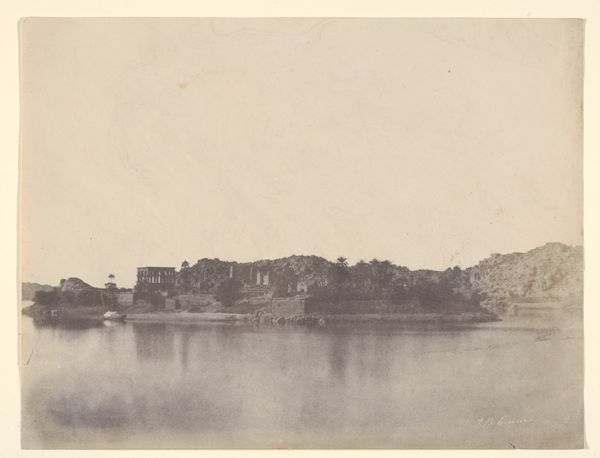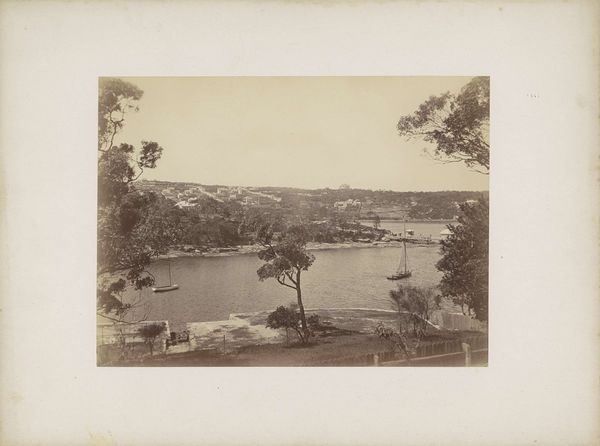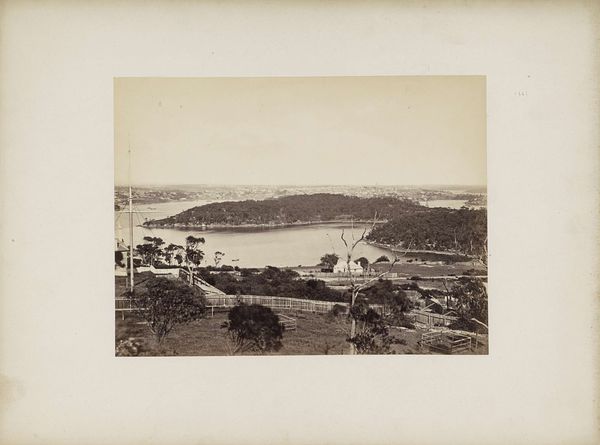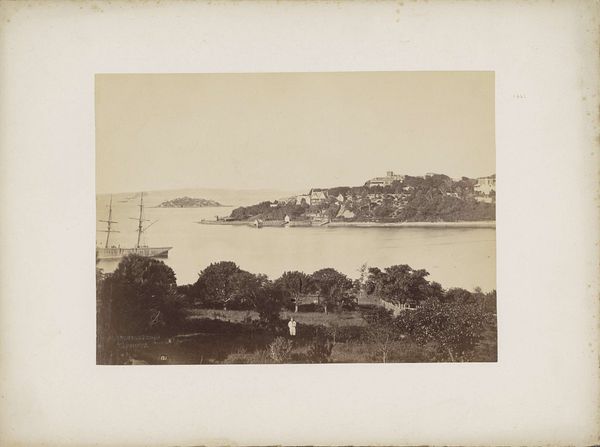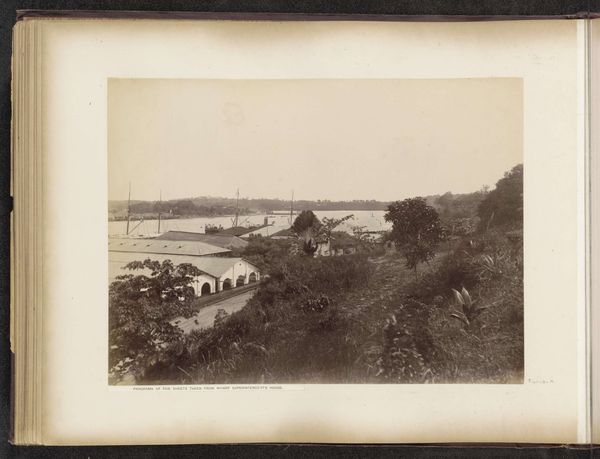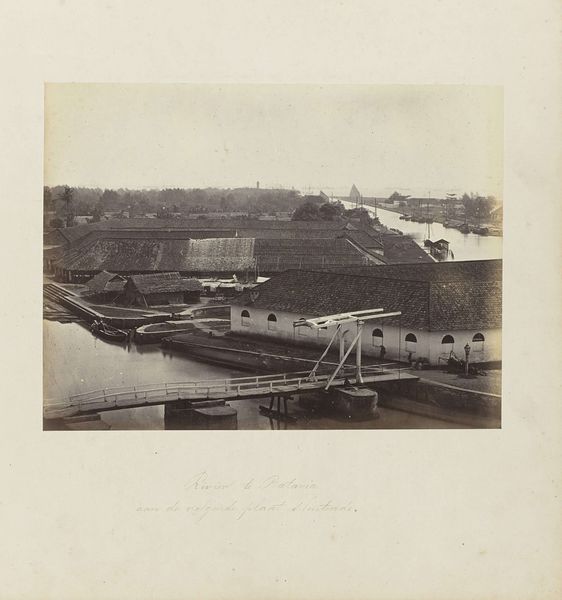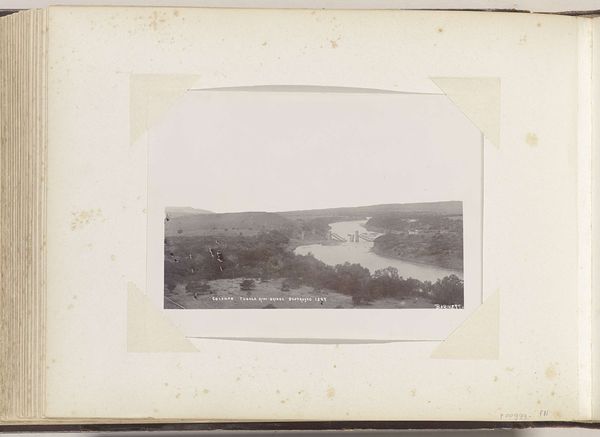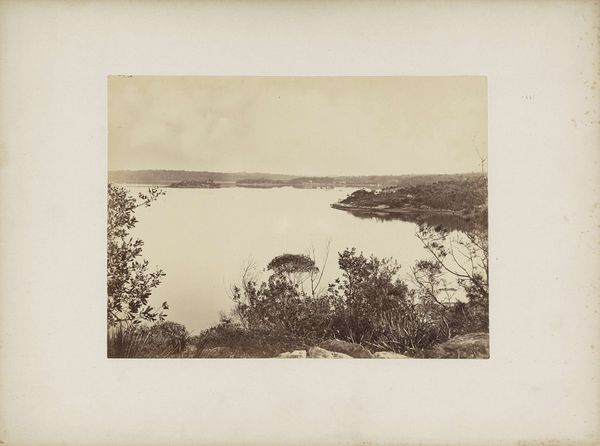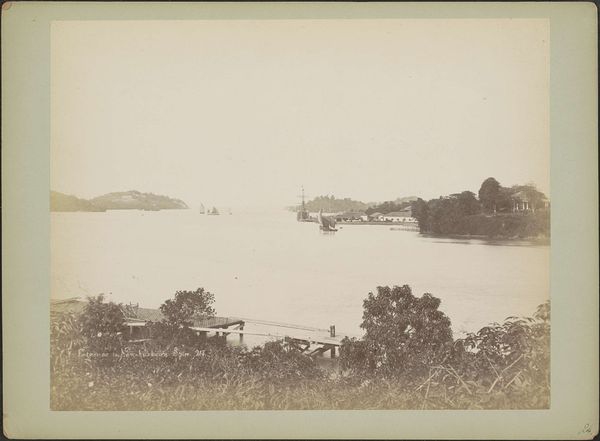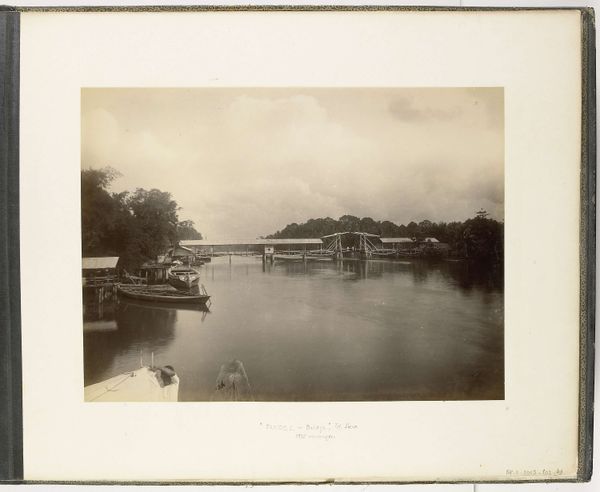
Gezicht op een baai en oevers van (vermoedelijk) Sydney c. 1890 - 1910
0:00
0:00
photography, gelatin-silver-print
#
landscape
#
photography
#
gelatin-silver-print
#
realism
Dimensions: height 241 mm, width 324 mm
Copyright: Rijks Museum: Open Domain
This photograph of a bay and the shores of what is believed to be Sydney was taken by Charles Bayliss. It is printed on paper using a chemical process to create a sepia-toned gelatin silver print. The image is made through a complex combination of technical expertise and an understanding of chemistry. Light-sensitive silver halides capture the image, while the gelatin acts as a binder, creating a smooth surface. The sepia tone wasn’t only an aesthetic choice. The chemical process imbued the print with archival stability at a time when photography was still a relatively new medium. Bayliss, working in the late 19th century, would have been acutely aware of photography's potential as a tool for documentation and artistic expression. The photograph encapsulates a specific moment in Sydney's history. Considering the materiality of the photograph reminds us that even in seemingly straightforward images, the artist’s process and technical choices shape our understanding of the subject. In this instance, the photograph transcends mere documentation to become a carefully crafted work of art.
Comments
No comments
Be the first to comment and join the conversation on the ultimate creative platform.

